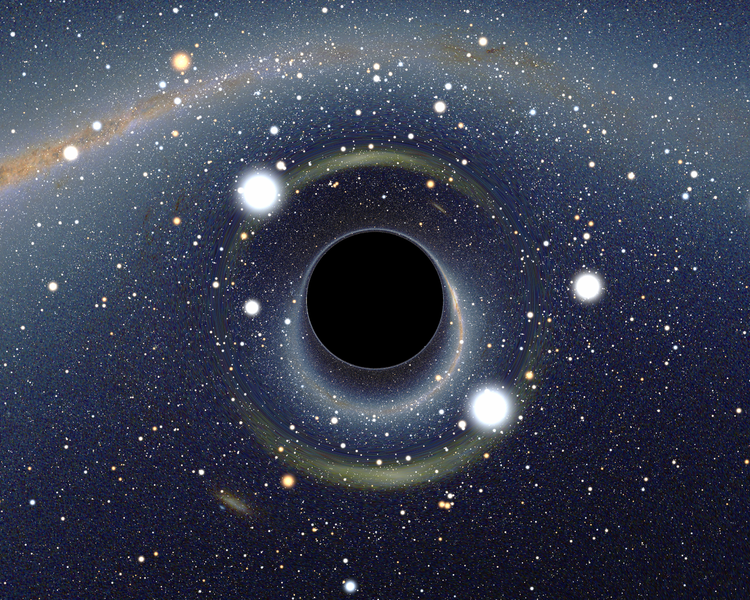Science News
Dark Matter around Black Holes
March 23, 2010

Scientists can’t reach out and touch things in space—such as black holes and dark matter—but scientific theories and mathematical models can describe the nature and behavior of these exotica. Recently, scientists in Mexico modeling the behavior of dark matter around black holes have found that dark matter doesn’t react the way they thought it would.
Black holes in the centers of galaxies have millions or billions of times the mass of the Sun and draw in material at a high rate.
But does that material include dark matter?
About 23% of the Universe is made up of mysterious dark matter, invisible material only detected through its gravitational influence on its surroundings. In the early Universe, small clumps of dark matter seem to have attracted gas, which then coalesced into stars that eventually assembled the galaxies we see today.
Drs. Xavier Hernandez and William Lee of the National Autonomous University of Mexico modeled the way in which black holes absorb the dark matter. They found that the rate at which this happens is very sensitive to the amount of dark matter found in the black holes’ vicinity.
If the concentration is large enough—more than a critical density of seven times the mass of our sun spread over each cubic light year of space—the black hole mass would increase so rapidly that it would swallow large amounts of dark matter. Soon the entire galaxy would be altered beyond recognition.
Since we don’t observe the galaxies altered in this way, the scientists concluded that the density of dark matter in the centers of galaxies must be a constant, smaller value. Or dark matter may behave in an entirely different way from what scientists expect. Especially around massive, hungry black holes.
Creative Commons image by Alain r